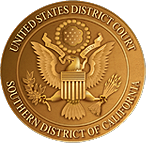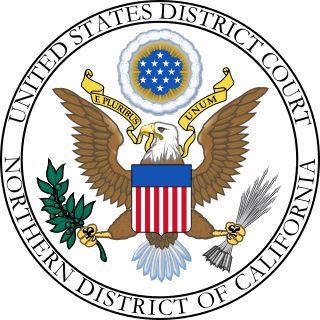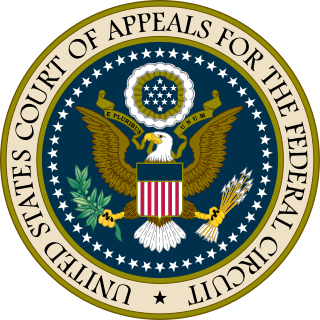Related Research Articles
Apple Computer, Inc. v. Microsoft Corporation, 35 F.3d 1435, was a copyright infringement lawsuit in which Apple Computer, Inc. sought to prevent Microsoft and Hewlett-Packard from using visual graphical user interface (GUI) elements that were similar to those in Apple's Lisa and Macintosh operating systems. The court ruled that, "Apple cannot get patent-like protection for the idea of a graphical user interface, or the idea of a desktop metaphor [under copyright law]...". In the midst of the Apple v. Microsoft lawsuit, Xerox also sued Apple alleging that Mac's GUI was heavily based on Xerox's. The district court dismissed Xerox's claims without addressing whether Apple's GUI infringed Xerox's. Apple lost all claims in the Microsoft suit except for the ruling that the trash can icon and folder icons from Hewlett-Packard's NewWave windows application were infringing. The lawsuit was filed in 1988 and lasted four years; the decision was affirmed on appeal in 1994, and Apple's appeal to the U.S. Supreme Court was denied.
In a patent or patent application, the claims define, in technical terms, the extent, i.e. the scope, of the protection conferred by a patent, or the protection sought in a patent application. In other words, the purpose of the claims is to define which subject-matter is protected by the patent. This is termed as the "notice function" of a patent claim—to warn others of what they must not do if they are to avoid infringement liability. The claims are of the utmost importance both during prosecution and litigation alike.
A declaratory judgment, also called a declaration, is the legal determination of a court that resolves legal uncertainty for the litigants. It is a form of legally binding preventive adjudication by which a party involved in an actual or possible legal matter can ask a court to conclusively rule on and affirm the rights, duties, or obligations of one or more parties in a civil dispute. The declaratory judgment is generally considered a statutory remedy and not an equitable remedy in the United States, and is thus not subject to equitable requirements, though there are analogies that can be found in the remedies granted by courts of equity. A declaratory judgment does not by itself order any action by a party, or imply damages or an injunction, although it may be accompanied by one or more other remedies.
KSR Int'l Co. v. Teleflex Inc., 550 U.S. 398 (2007), is a decision by the Supreme Court of the United States concerning the issue of obviousness as applied to patent claims.
Ariad Pharmaceuticals et al. v. Eli Lilly and Company, 598 F.3d 1336, is a United States court case regarding accusations of infringement by Eli Lilly on U.S. Patent 6,410,516 held by ARIAD Pharmaceuticals. The Federal Circuit ruled en banc to invalidate the patent for a lack of sufficient description of the invention. Amici briefing before the en banc panel was intensive, with 26 separate briefs filed, and the final decision has been heavily discussed by legal commentators. Its ultimate impact on biotechnology patents remains to be determined.

Alcatel-Lucent v. Microsoft Corp., also known as Lucent Technologies Inc. v. Gateway Inc., was a long-running patent infringement case between Alcatel-Lucent and Microsoft litigated in the United States District Court for the Southern District of California and appealed multiple times to the United States Court of Appeals for the Federal Circuit. Alcatel-Lucent was awarded $1.53 billion in a final verdict in August 2007 in the U.S. District Court for the Southern District of California in San Diego. The damages award was reversed on appeal in September 2009, and the case was returned for a separate trial on the amount of damages.
Bowers v. Baystate Technologies, 320 F.3d 1317, was a U.S. Court of Appeals Federal Circuit case involving Harold L. Bowers and Baystate Technologies over patent infringement, copyright infringement, and breach of contract. In the case, the court found that Baystate had breached their contract by reverse engineering Bower's program, something expressly prohibited by a shrink wrap license that Baystate entered into upon purchasing a copy of Bower's software. This case is notable for establishing that license agreements can preempt fair use rights as well as expand the rights of copyright holders beyond those codified in US federal law.
Fujifilm Corp v. Benun, 605 F.3d 1366 was a case in which the United States Court of Appeals for the Federal Circuit affirmed the judgment made by the United States District Court for the District of New Jersey that the defendants infringed patents owned by Fujifilm Corporation.
Perfect Web Technologies, Inc. v. InfoUSA, Inc. 587 F.3d 1324, is a United States Court of Appeals for the Federal Circuit case in which the court held that a patent can be invalidated due to the obvious nature of the asserted claims. Perfect Web, an e-mail marketer, sued its competitor InfoUSA for patent infringement, claiming that InfoUSA's bulk email distribution method infringed its Patent No. 6,631,400. The district court initially found that the patent did not meet the non-obviousness requirement and was therefore invalid. On appeal, The Federal Court agreed that the patent was obvious because someone of ordinary skill could arrive at the patent claim using common sense.

Adobe Systems, Inc. v. Southern Software, Inc. was a case in the United States District Court for the Northern District of California regarding the copyrightability of digitized typefaces. The case is notable since typeface designs in general are not protected under United States copyright law, as determined in Eltra Corp. v. Ringer. Since that case, the United States Copyright Office has published policy decisions acknowledging the registration of computer programs that generate typefaces. In this case, the court held that Adobe's Utopia font was protectable under copyright and Southern Software, Inc.'s Veracity font was substantially similar and infringing.

Lockwood v. American Airlines, Inc., 107 F.3d 1565, was a case for the United States Court of Appeals for the Federal Circuit in which Lawrence B. Lockwood sued American Airlines, Inc for patent infringement for their reservation system, SABREvision. The case was first heard by the United States District Court for the Southern District of California, which ruled in favor of American Airlines, Inc. In the summary judgment for that case, the court ruled that American Airlines, Inc's SABREvision system did not infringe on U.S. Patent Re. 32,115, U.S. Patent 4,567,359, and U.S. Patent 5,309,355 held by Lockwood. Furthermore, the court ruled that the '355 patent was invalid under 35 U.S.C. § 102 and the asserted claims of the '359 patent were invalid under 35 U.S.C. § 103. The Court of Appeals for the Federal Circuit upheld these rulings in favor of American Airlines, Inc. based on the fact that district court determined there were no genuine issues of material fact in dispute.
Global-Tech Appliances, Inc. v. SEB S.A., 563 U.S. 754 (2011), is a United States Supreme Court case. The case considered whether a party, in order to "actively [induce] infringement of a patent" under 35 U.S.C. § 271(b), must know that the induced act constitutes patent infringement, or whether deliberate indifference to the existence of a patent can be considered a form of actual knowledge. In an 8–1 decision delivered by Justice Samuel Alito, the Court held that induced infringement requires knowledge of patent infringement, but because the petitioners had knowledge of a patent infringement lawsuit involving the respondent and Sunbeam Products over the same invention, the Federal Circuit's judgement that petitioners induced infringement must be affirmed under the doctrine of willful blindness.

Rambus Inc. v. NVIDIA Corporation was a patent infringement case between Rambus and Nvidia. The case was heard in the United States District Court for the Northern District of California.
CyberSource Corp. v. Retail Decisions, Inc., 654 F.3d 1366, is a United States Court of Appeals for the Federal Circuit case that disputed patent eligibility for the '154 patent, which describes a method and system for detecting fraud of credit card transactions through the internet. This court affirmed the decision of United States District Court for the Northern District of California which ruled that the patent is actually unpatentable.
Alice Corp. v. CLS Bank International, 573 U.S. 208 (2014), was a 2014 decision of the United States Supreme Court about patent eligibility. The issue in the case was whether certain claims about a computer-implemented, electronic escrow service for facilitating financial transactions covered abstract ideas ineligible for patent protection. The patents were held to be invalid because the claims were drawn to an abstract idea, and implementing those claims on a computer was not enough to transform that idea into patentable subject matter.
Walker Process Equipment, Inc. v. Food Machinery & Chemical Corp., 382 U.S. 172 (1965), was a 1965 decision of the United States Supreme Court that held, for the first time, that enforcement of a fraudulently procured patent violated the antitrust laws and provided a basis for a claim of treble damages if it caused a substantial anticompetitive effect.
Akamai Technologies, Inc. v. Limelight Networks, Inc., 797 F.3d 1020, is a 2015 en banc decision of the United States Court of Appeals for the Federal Circuit, on remand from a 2014 decision of the U.S. Supreme Court reversing a previous Federal Circuit decision in the case. This is the most recent in a string of decisions in the case that concern the proper legal standard for determining patent infringement liability when multiple actors are involved in carrying out the claimed infringement of a method patent and no single accused infringer has performed all of the steps. In the 2015 remand decision, the Federal Circuit expanded the scope of vicarious liability in such cases, holding that one actor could be held liable for the acts of another actor "when an alleged infringer conditions participation in an activity or receipt of a benefit upon performance of a step or steps of a patented method and establishes the manner or timing of that performance." In addition, the court held that where multiple "actors form a joint enterprise, all can be charged with the acts of the other[s], rendering each liable for the steps performed by the other[s] as if each is a single actor."
The reverse doctrine of equivalents is a legal doctrine of United States patent law, according to which a device that appears to literally infringe a patent claim, by including elements or limitations that correspond to each element or limitation of the patent claim, nonetheless does not infringe the patent, because the accused device operates on a different principle. That is, "it performs the same or a similar function in a substantially different way." It has been said that "the purpose of the 'reverse' doctrine is to prevent unwarranted extension of the claims beyond a fair scope of the patentee's invention."
References
- 1 2 3 Lizardtech, Inc. v. Earth Res. Mapping, Inc., 424F.3d1336 ( Fed. Cir. 2005).
- ↑ 85 Tex. L. Rev. 1629 (2006-2007); Software and Patent Scope: A Report from the Middle Innings; Merges, Robert P.
- 1 2 35 U.S.C. § 112.
- ↑ USpatent 5710835,Bradley; Jonathan N.,"Storage and retrieval of large digital images",issued 1998-01-20, assigned to The Regents of the University of California, Office of Technology
- ↑ The other charges included copyright infringement, breach of contract, false designation of origin, false description, and common law trademark infringement
- ↑ Lizardtech, Inc. v. Earth Res. Mapping, Inc.,35F. App'x918(Fed. Cir.May 22, 2002).